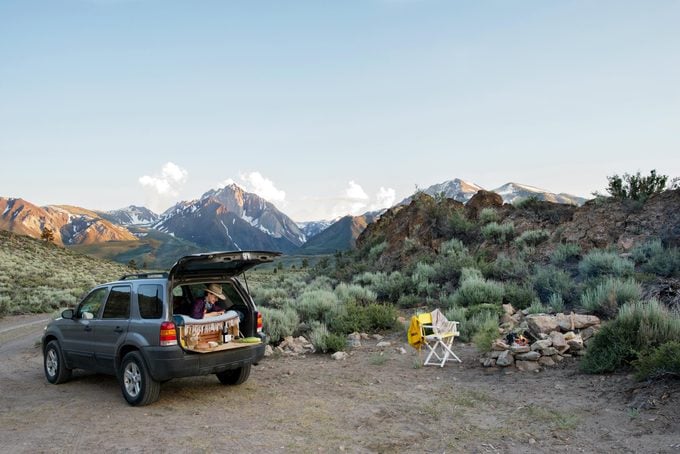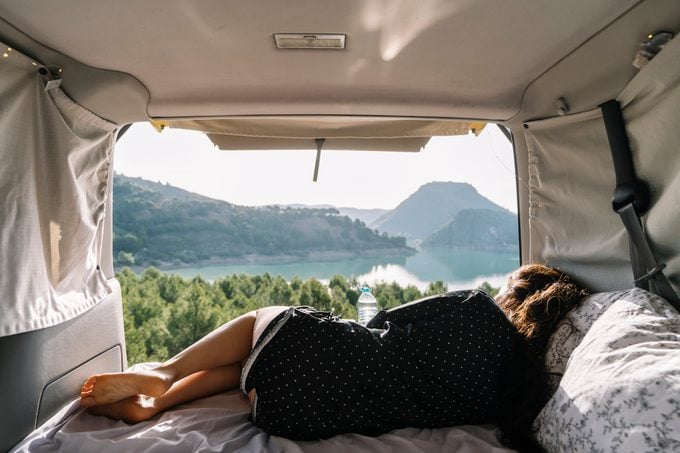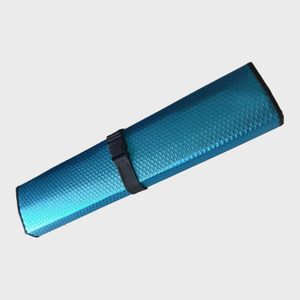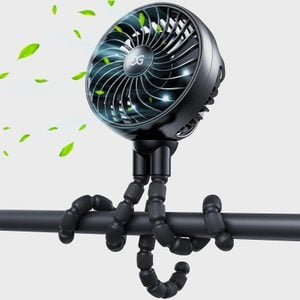Car Camping 101: Everything You Need to Know About Camping in Your Car
Updated: Jun. 23, 2024

Pick your spot, get a few supplies together and get behind the wheel. It's time to go car camping!
Car camping is an amazingly easy way to get into nature, and there are as many styles as there are campers. From campground car and RV camping to car tent camping, glamping and boondocking to dispersed camping and winter camping, there’s a car-camping strategy for every type of adventurer.
I particularly love this type of getaway because there are only a few car-camping essentials you need to get started—it’s a use-what-you-have way to get out there. Because there’s such a low barrier to entry, it’s a great option for beginner campers too.
Rachael Schultz, the editorial director of Wide Open Spaces, who car camps about four to seven nights a month all over the Rocky Mountains, agrees. “With car camping, you don’t have to give up creature comforts to sleep outside, and if you know how to do research on campsites, you can score a spot with no one around—all without having to hike in [with] your belongings.”
Get Reader’s Digest’s Read Up newsletter for more camping, humor, cleaning, travel, tech and fun facts all week long.
What is car camping?
Instead of spending the night in a tent or a cabin, you’ll make a car or van your shelter when car camping. You can opt for various levels of sleeping comfort, but one of the most wonderful things about car camping is the freedom it gives you to stay overnight just about anywhere.
What should you know before you camp in a car?

The most important camping tip to follow before your trip: Do your research. Not every desirable spot is a legal place to park for the night, and the weather and temperature can greatly affect your enjoyment. Make sure you have a crystal-clear plan of where you’re overnighting and what the expected temperatures are going to be while you’re there.
Do your research
For private campsites, you’ll need permission to park and sleep there, though acquiring it is usually as easy as making a reservation online. Keep in mind that you can’t always camp for free—most times, you’ll need to pay a small fee.
If you’re interested in “dispersed” camping (overnighting on public land outside a designated campground), check out Recreation.gov for everything you need to know about passes, permits and where you can and can’t spend the night. Another great resource: the website for the parks department in whatever state you’re visiting.
And yes, you do need to get your permits in order before you camp in a car. If you skip the permit and permission process, you run the risk of being woken and fined in the middle of the night by an annoyed park service employee.
Watch the weather
Any temperature below 32 degrees has some inherent danger. If you are car camping during the winter in a camper or an RV, you’ll have the benefit of a safe electric or propane vehicle heater keeping you warm, but most people who are car camping will be using a truck or car without an overnight heat source. In that case, you’ll need to rely on the temperature rating of your sleeping bag to gauge how cold is too cold. If your sleeping bag is rated for a comfort level of zero degrees, that’s the temperature where you’ll want to draw the line.
Caution is, of course, necessary on the other side of the temperature spectrum as well. If it’s going to be uncomfortably hot, consider how you’ll feel spending the night in a closed car and whether simple steps—like rolling down the windows or using a fan—will make enough of a difference.
Come up with Plan B
In addition to your Plan A, have a backup plan. Wherever you are, whatever the season, things can go wrong: The temperature can drop lower (or go higher!) than forecasted, making car camping less pleasant. Or inclement weather can make your once-lovely campsite more dangerous than you had initially anticipated.
Make sure you identify an alternate place to sleep nearby (like a motel or a hotel) if you need it, even if that’s in the middle of the night. And before you turn in for the night, confirm that your phone is fully charged and that the battery will last until morning.
Make sure your car is comfy
The simplest form of car camping involves you, your car and a sleeping bag. But there are ways to add to your comfort level.
Do your back seats lay flat? Many campers will invest in a car air mattress that helps turn the back of the car into a bed. You can get a generic one that works with your car’s dimensions, but you can also find blow-up mattresses that are configured for your exact make and model. When you’re done, they deflate and store compactly.
How to pick a location for car camping

The wonderful thing about car camping is that there are virtually limitless options when it comes to picking your spot. Your biggest decision will be between staying at a campground and doing some off-the-grid camping on public lands, like in national parks or forests. Beyond that, here are a handful of top considerations that will help you have the most comfortable camping trip possible.
Park at a campground
You can choose a traditional campground, where you’ll likely have access to cushy comforts like showers, bathrooms and places to charge your phone. You’ll rent a campsite, which is usually a marked (and numbered) clearing with ample room for your car and a place to make a campfire. Many campsites will also have electrical hookups for lights and device charging, and some are situated to take in a beautiful view. You will likely have neighbors, and amenities vary widely by site.
Check the incline
You’ll always want to park on level ground. You may not notice the topography when you first arrive, but you will definitely feel it if you’re trying to sleep on an incline.
Seek out shade
If you’re camping in the summer months and you know it’s going to be hot, pick a location that’s shaded so your car won’t be sweltering. (Bonus: You’ll be less likely to wake up with the sun.)
Consider proximity
In some cases (you’ll want to check local park department regulations), you can even park in a regular, paved parking lot. The benefit? You’ll be one of the first people to access the nearby ski mountain in the winter or hiking trails all year round.
Keep mornings in mind
Before you settle on a car-camping location, think about what your site will be like in the morning when you wake up. Will your secluded spot be overrun by tourists? Will you get blocked in by street plowing? If so, you may want to pick a different location.
Be sure you can camp legally
Wherever you roam, especially if it’s not at a campsite, just make sure you can stay there legally: Consult Recreation.gov, or try a site like AllStays for a huge list of options by state.
You can even stay on private land in some cases. Search through one of the more than 3,000 camping locations on a site like Boondockers Welcome, where you can purchase unlimited access to overnight stays on beautiful stretches of owned land for a small yearly membership fee. About 75% of the sites on Boondockers Welcome also include hookups for electricity and water.
What to pack for car camping
The right packing list depends greatly on the season and your particular vehicle, but here are some of the camping essentials you’ll want on hand for your next car-camping adventure.
Camping in any season
- Car window shield: Glass is horrible at keeping heat in or out. Invest in a cover for the dashboard and side windows, which will also help with privacy. Hard-core car campers often just buy a big roll of Reflectix and custom-cut the size they need for their vehicles.
- Sleeping bag and pillow: Depending on the season, you’ll want to pick a sleeping bag with the right temperature/comfort rating for your chosen environment.
- Battery-powered fan: Even when you’re winter camping, some air circulation while you’re sleeping will be welcome. Get something small that you can adjust and point where you need it—you’ll appreciate the noise-canceling effects it offers too.
- Flashlight or headlamp: Great for finding your way to a campsite bathroom in the dark or rummaging around in the vehicle without having to turn on the interior light, a flashlight or headlamp is a must-have tool that won’t take up a ton of space.
- First-aid kit: Get a compact kit and store it in your glove compartment if you don’t have one there already.
- Car mattress: This isn’t an essential item, but an air mattress or mattress pad can do wonders for your sleeping comfort!
Winter car camping
- Warm PJs: When shopping for winter camping gear, skip cotton and instead opt for pajamas in a heat-retaining, moisture-wicking fabric like wool (merino), bamboo or silk.
- Wool hat: Your head is the one part of your body that peeks out of the sleeping bag. Keep it warm with a wool topper.
- Hand warmers: Pick up a box of these before heading out—you will love tucking them into your sleeping bag, sticking them to your socks or putting them anywhere you need a quick heat-up.
- Wool blankets: Nothing is better when it comes to compact heat retention. Layer one on top of your bedding, and you’ll be toasty-warm all night.
Tips for car camping
You don’t have to be a veteran camper to enjoy a relaxing car-camping trip. The tips below will help everyone, including first-time campers, make the most of a car-camping getaway.
Turn off the car
If you’re camping in the winter, you may be tempted to sleep with your car heater running. Do not do this. (Unless, of course, you’re in an RV or camper made to run the heat safely overnight.) A running car produces carbon monoxide, which is a deadly gas. Even though your car is outside, you run a risk of inhalation when your car is stationary.
Instead, turn on the heater for about 30 minutes before you plan to go to sleep, then turn off the car. If it’ll be cold where you’re camping, come prepared with a sleeping bag rated for cold temps and plenty of winter-weather clothing and gear.
Make yourself comfortable

“Don’t skimp on sleeping comforts,” says Schultz. “One of the main reasons to car camp vs. backpack is so you can be more comfortable.”
If you’re sleeping in your car, it’s worth it to cut a piece of memory foam or invest in an inflatable mattress to fit your hatchback. Also, she adds, “always bring a full-size pillow.”
Consider safety
There are plenty of camping hacks to make your experience easier, but more important is Schultz’s trick for anyone concerned about their safety while enjoying the great outdoors. “If you’re a woman and alone,” she says, “leave your keys in the ignition and have a clear path into your driver’s seat just in case you start to feel weirded out. Having the safety of your car is one of the perks of car camping as a woman, but make sure you’re setting yourself up for success.”
Keep bears away
Wherever you’re camping, there’s a good chance you’re in or near bear country. And heads up: Bears have an excellent sense of smell.
Some campsites have existing “bear boxes,” which allow you to lock up any food or food remnants in a smell-proof container to keep curious bears looking elsewhere. If yours doesn’t or you’re not at a campsite, you still need to dispose of any food or food wrappers before heading to bed.
And be sure you know what to do if you see a bear so you’re prepared in case of an emergency.
About the expert
- Rachael Schultz is the editorial director of Wide Open Spaces, a website that focuses on nature appreciation and exploration.























